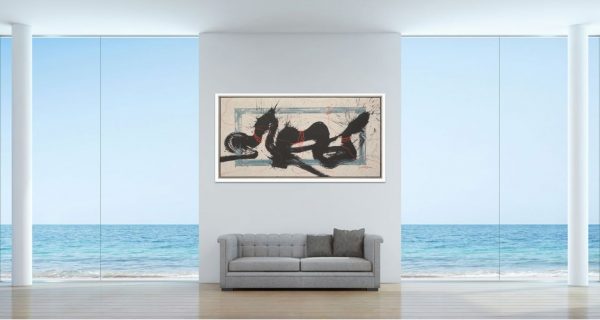It’s a fact that Fine Art as an investment class has outperformed the S&P 500 every year for the last 10 years. In fact, 64% of private banks say that estate planning around art is a strategic focus for them. People invest in Oil & Gas and lots of other things, so why not art?

According to the annual Deloitte Art & Finance Report, 75% of art collectors and buyers are purchasing art for collecting purposes with a view to investment — a large jump from 53% since 2012.
The Only Asset Class You Can Show Off in Your Living Room
When you consider art collection as an investment, it’s like any other asset class. When it performs well, more investors want a piece of the action. It doesn’t matter if it’s a stock, a piece of real estate or a work of art.

We can remain bullish on art as an investment. Wealth managers can be assured that high-end artists’ work are less affected by macroeconomic fluctuations and 51% of wealth managers see art as holding value rather than being a yield-oriented investment.
A Global Change in Investment Tactics
While the general public has always considered art as an investment, the business community has been loathe to change their investment tactics. The merchant bankers and investment houses I work with are more loyal and comfortable working with oil and gas investments and mining flow-through deals. They really don’t want or have any desire to re-invent the system so it’s more logical for them to think oil and gas.

Brokerage houses have a difficult time breaking away from the traditional methods of investment.
We can certainly understand their dilemma. They have been selling resource stock for decades to a certain type of client and now people are telling them to consider another flow-through investment like art. The two groups of investors the houses are pitching to are different types of investors. The only thing that they have in common is that both set of investors are usually high net worth individuals.
The brokerage houses understand that it’s easy to sell their normal portfolio to their existing clients but art as an investment may require them going outside the box and recruiting new investors. In their minds it makes little sense to do so. However, it is an opportunity for aggressive investment advisors to increase potential investors across a diversified portfolio.

The banking sector has also been identified as an active supporter of art and culture. An example of this collaboration between banking and art is the support of various art fairs and art-related events from major banks such as UBS, JP Morgan, RBS with major museums and art foundations from all over the world.
In today’s fast-paced technology world where heritage elements and objects of cultural significance prove to become much rarer and thus more highly sought after, ‘ultra high net worth individuals’ most are seeing art collecting as an asset class. In the US this group invests an average of 16% of their total assets in art.
In addition to supporting art activities and inviting clients to art-related events, large organisations and luxury brands have also jumped on the bandwagon to work on various events such as art and lifestyle collaborations and release art-related projects with galleries and museums. Fine Art and its limitless potential as a strong economic factor has truly, in the past decade, became a global phenomenon and will certainly continue to be so.

Extracted from the original articles ‘Art as an Investment & Endowment’ and ‘Fine Art, the Classier Investment’ by Gary C. Bizzo
